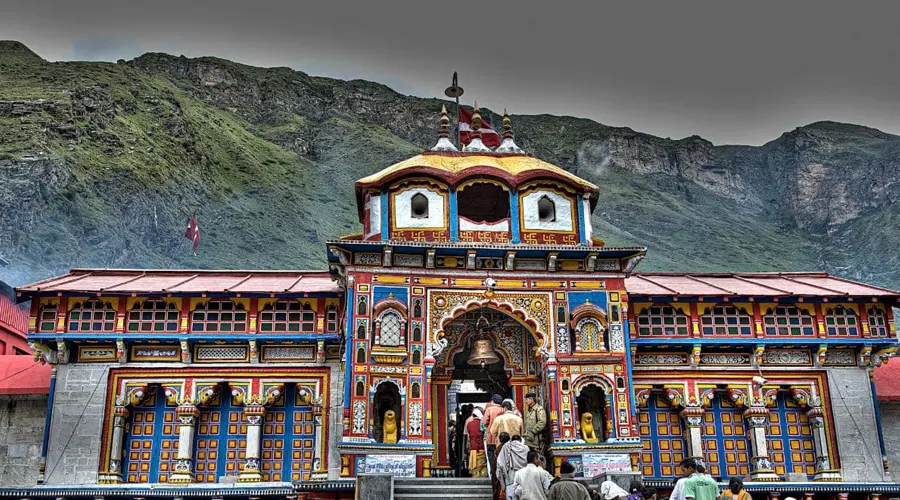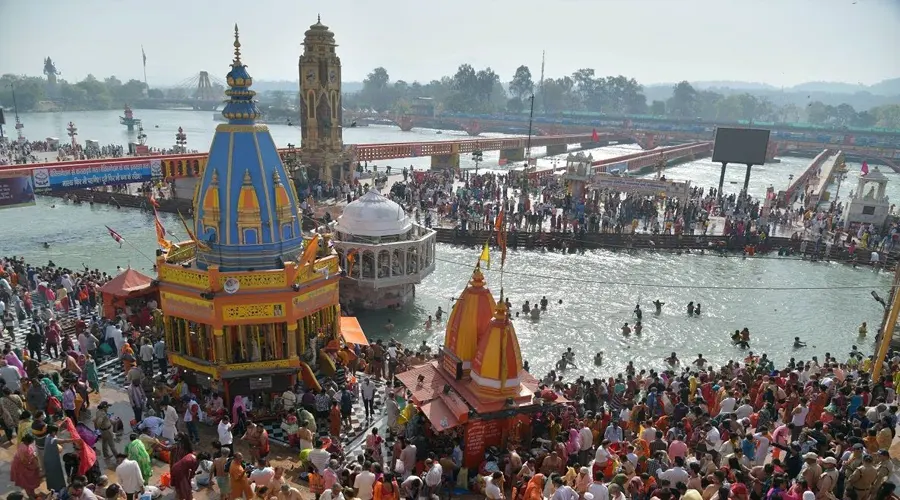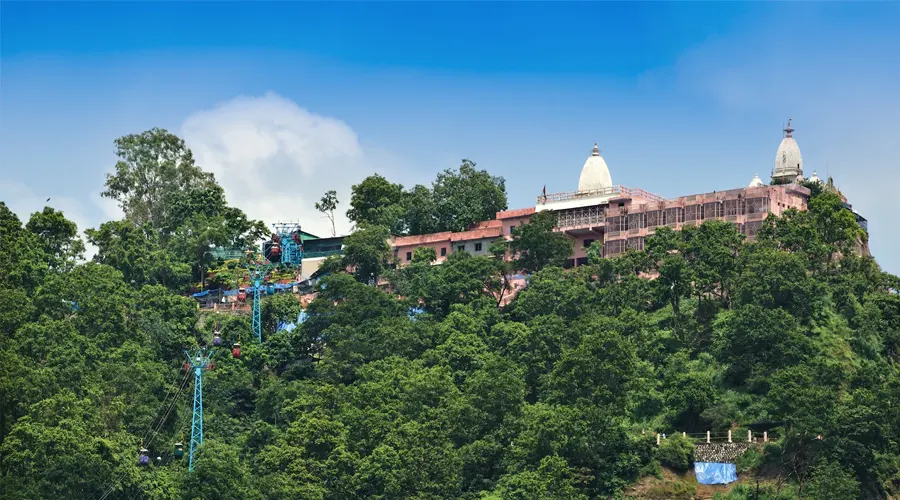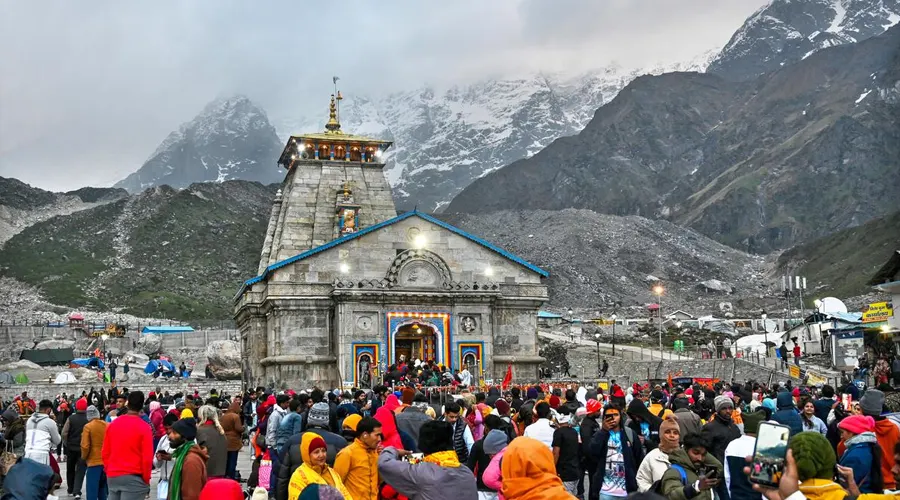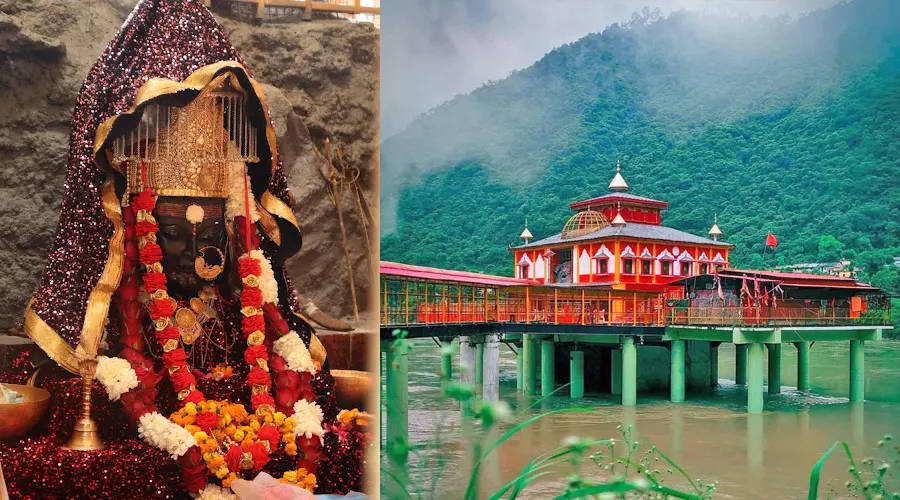Uttarakhand Tourism: A Perfect Blend of Nature, Adventure, and Spirituality
Uttarakhand, also known as Dev Bhoomi, has been the center of religious and spiritual knowledge for ages. The history and culture of Uttarakhand are deeply connected with religion and are celebrated everywhere. Many cultures and ethnicities coexist here with peace and harmony. It is the perfect place for anyone who wants to learn more about the Hindu religion or for the breathtaking views of the Himalayas.
History of Uttarakhand
Uttarakhand is a settlement of Kol people, belonging to the community who speak the Munda language. Later on, in the Vedic era, Indo-Aryan tribes emerged from the northern region and joined hands with Kols'. There is also a belief that Pandavas of Mahabharta ventured out into Uttarakhand and it was the most ideal abode for Rishis and Sadhus. The first major dynasty that reigned in the Garhwal and Kumaon region was Kunindas who ruled over there in the 2nd century BC.
They were followed by the Naga dynasty (4th century), the Katyuri dynasty (7th and 14th century), and so on. While coming to the medieval period, in the 13th century the Garhwal and Kumaon kingdoms had settled in the west and east regions of the state respectively. In 1791, the Nepalese Gurkha Empire got victorious over Kumaon, and in 1803 they captured Garhwal as well.
Then, there was an Anglo-Nepalese war in 1816 that led to the Garhwali kingdom's re-establishment in Tehri, where the Treaty of Sagauli resulted in the removal of the Kumaon Kingdom entirely.
When India got independence, Tehri's state got merged into the state of Uttar Pradesh with the composition of the Garhwal and Kumaon regions in Uttarakhand. For a long time, Uttarakhand Kranti Dal was the reason for its nomination as Uttarakhand, and they began asking for a separate state.
In 1994, the demand for those political groups got momentum, which led to the division of the region to the state of Uttar Pradesh from it in 2000.Until 1998, Uttaranchal was the name famous for the country with the suggestion of the BJP. But, in 2006, the demand to rename the state to Uttarakhand rose, and parliament passed a bill in 2006 only to endow the fulfillment of demand. Finally, December 2006 was the time when Uttarakhand became an independent state of India and began developing keeping intact its rich heritage.
Tourism in Uttarakhand: A Paradise for Nature Lovers and Spiritual Seekers
Uttarakhand, often referred to as the "Land of Gods," is a state where nature’s beauty and spirituality converge. From its snow-capped Himalayan peaks and verdant valleys to its serene lakes and ancient temples, Uttarakhand offers travelers a unique blend of natural wonders, adventure, and religious significance. Whether you're seeking a spiritual retreat, an adventurous trek, or a peaceful escape in the mountains, Uttarakhand promises an unforgettable experience.
1. Natural Beauty:
Uttarakhand is a paradise for nature lovers, with lush green forests, sparkling rivers, tranquil lakes, and towering mountains. Some of the state’s most iconic natural attractions include:
- Nanda Devi National Park: A UNESCO World Heritage site, this park is home to the mighty Nanda Devi peak and offers breathtaking views of snow-covered mountains, alpine meadows, and diverse wildlife.
- Valley of Flowers: A vibrant, colorful national park nestled in the Western Himalayas, famous for its incredible variety of alpine flowers that bloom during the summer months.
- Corbett National Park: India’s first national park, Corbett is a haven for wildlife enthusiasts. Home to tigers, elephants, leopards, and a variety of bird species, it offers thrilling safaris through the dense forests and grasslands.
2. Spiritual and Religious Destinations:
Uttarakhand is known for its strong spiritual heritage and is home to numerous pilgrimage sites. The most famous of these is the Char Dham – four sacred temples that attract millions of pilgrims every year.
- Kedarnath Temple: Dedicated to Lord Shiva, this temple is one of the holiest in the Hindu religion and is located at an altitude of over 3,500 meters.
- Badrinath Temple: Another of the Char Dham pilgrimage, dedicated to Lord Vishnu, this temple is located in the breathtaking town of Badrinath and draws pilgrims from across the country.
- Haridwar: A major religious hub, Haridwar is famous for the Ganga Aarti performed at Har Ki Pauri. It is one of the holiest cities in India and offers a unique spiritual experience.
- Rishikesh: Known as the “Yoga Capital of the World,” Rishikesh is a spiritual retreat where visitors come to practice yoga, meditation, and find peace by the banks of the River Ganges.
3. Adventure and Outdoor Activities:
Uttarakhand is a haven for adventure enthusiasts, offering a wide range of activities in the mountains, rivers, and forests.
- Trekking: With its vast stretches of mountains and forests, Uttarakhand offers some of the best trekking trails in India. Popular treks include:
- Roopkund Trek: Known for its mysterious "Skeleton Lake," this trek offers a challenging yet rewarding experience.
- Valley of Flowers Trek: A stunning trek that leads to the UNESCO-listed Valley of Flowers, known for its rich biodiversity.
- Har Ki Dun Trek: A beautiful trek that takes you to a picturesque valley surrounded by snow-capped peaks.
- River Rafting: Rishikesh, in particular, is known for its white-water rafting opportunities, where adventure seekers can navigate the challenging rapids of the Ganges.
- Camping and Paragliding: Whether you want to camp in the pristine wilderness or take to the skies with paragliding in Nainital, Uttarakhand offers a variety of outdoor adventures.
4. Lakes and Hill Stations:
Uttarakhand is home to several picturesque hill stations and serene lakes, making it a perfect destination for relaxation and rejuvenation.
- Nainital: A charming hill station famous for its serene Naini Lake, Nainital is a perfect getaway for nature lovers and those seeking tranquility. Visitors can enjoy boating, shopping at the Mall Road, and hiking to viewpoints like Tiffin Top and Snow View Point.
- Mussoorie: Known as the “Queen of Hills,” Mussoorie is a beautiful hill station that offers panoramic views of the surrounding Himalayan ranges. Kempty Falls and the Gun Hill are popular tourist spots.
- Almora: A hill station in the Kumaon region, Almora is famous for its temples, scenic views, and its proximity to Nanda Devi and Corbett National Park.
5. Temples and Historical Sites:
Uttarakhand is a state steeped in history and mythology. Along with its famous religious sites, it also boasts many ancient temples and historical landmarks.
- Jageshwar Temple: Located in the Almora district, the Jageshwar Temple complex is a group of 124 ancient temples dedicated to Lord Shiva, set against the backdrop of deodar forests.
- Ramnagar Fort: Near Corbett National Park, this historical fort offers insights into the region’s royal history and architecture.
- Rajaji National Park: A renowned national park that blends history and wildlife, offering safaris with views of the Ganges and a variety of wildlife, including elephants and tigers.
6. Wellness and Yoga Retreats:
For those seeking peace and spiritual healing, Uttarakhand is the ideal destination for wellness and yoga retreats.
- Parmarth Niketan Ashram (Rishikesh): A famous spiritual center offering yoga and meditation courses along with spiritual healing programs.
- Ananda in the Himalayas (Narendranagar): A luxury wellness retreat set in the Himalayan foothills, offering rejuvenating spa treatments, yoga, and Ayurvedic therapies.
7. Local Markets and Handicrafts:
Uttarakhand is also known for its vibrant local markets and traditional handicrafts. Visitors can shop for:
- Woolen Clothing: From shawls to socks, woolen garments are popular souvenirs, especially in hill stations like Nainital and Mussoorie.
- Wood Carvings: Traditional wood carvings, particularly from the Kumaon region, are highly regarded for their craftsmanship.
- Aipan Art: A traditional form of painting from Uttarakhand, often seen on walls and floors during festivals and weddings.
Culture of Uttarakhand
The culture is deeply spiritual and community-oriented, marked by folk traditions, music, and reverence for nature.
Garhwali Culture
Garhwal is home to various communities like Rajputs, Brahmins, Jaunsaris, and Van Gujjars. The main language is Garhwali, with dialects such as Jaunsari and Marchi.
Kumaoni Culture
Kumaon’s linguistic diversity includes over a dozen dialects like Kumaiya and Askoti. Its folk tales and dance forms like Chhalaria reflect the valor and heritage of the region.
Festivals of Uttarakhand: A Celebration of Culture, Tradition, and Devotion
Uttarakhand is a state rich in culture, and its festivals reflect the deep spiritual and agricultural traditions of the region. The festivals here are not just about rituals but also about connecting with nature, family, and the community. From vibrant local festivals to grand religious occasions, here’s a closer look at some of the major festivals celebrated in Uttarakhand:
1. Makar Sankranti (January):
- Significance: Makar Sankranti marks the beginning of the harvest season and the transition of the sun into the zodiac sign of Capricorn. It is celebrated with much enthusiasm across the state.
- Celebrations: The festival is celebrated by flying kites, lighting bonfires, and offering prayers. Tilgul (sesame and jaggery sweets) are distributed as a symbol of goodwill and unity.
2. Harela (July-August):
- Significance: Harela is a harvest festival that celebrates the onset of the monsoon season and is a time for prayer and thanksgiving to the gods for a bountiful crop.
- Celebrations: People plant saplings, especially barley, in their homes, and the leaves of these plants are used to prepare a special dish. It is also a time for feasting, singing, and dancing.
3. Maha Shivaratri (February-March):
- Significance: Maha Shivaratri is a major Hindu festival dedicated to Lord Shiva, the patron deity of Uttarakhand.
- Celebrations: Devotees fast, perform rituals, and participate in night-long prayers and temple celebrations, especially in places like Kedarnath and Jageshwar. Temples are beautifully decorated, and the atmosphere is filled with chants and prayers.
4. Baisakhi (April):
- Significance: Baisakhi marks the beginning of the harvest season in Uttarakhand. It’s also celebrated as a day of spiritual awakening and is particularly important for the farming community.
- Celebrations: The festival is marked by traditional Bhangra and Gidda dances, feasting, and prayers. It is also a time when people give thanks for the new harvest.
5. Ganga Dussehra (June):
- Significance: Ganga Dussehra is celebrated to honor the descent of the holy river Ganga to the Earth. It is celebrated with great reverence in places like Haridwar and Rishikesh.
- Celebrations: Devotees take a holy dip in the river, perform prayers, and celebrate with local fairs, music, and traditional dances. The ghats of Haridwar are especially lively during this time.
6. Diwali (October-November):
- Significance: Diwali, the festival of lights, is celebrated across India, and Uttarakhand is no exception. It marks the victory of light over darkness and good over evil.
- Celebrations: Homes are decorated with oil lamps (diyas), rangoli designs, and colorful decorations. People exchange sweets, burst firecrackers, and offer prayers to Goddess Lakshmi for prosperity and good fortune.
7. Kumaon and Garhwal Festivals (Various Dates):
- Significance: Both the Kumaon and Garhwal regions of Uttarakhand have their own unique folk festivals that are deeply rooted in their respective traditions.
- Celebrations: Festivals like Nanda Devi Raj Jat Yatra in Kumaon and Fairs of Garhwal feature large processions, traditional dances, and rituals. These festivals celebrate deities, local legends, and the bond between the people and their land.
8. Basant Panchami (February-March):
- Significance: Basant Panchami marks the arrival of spring and is dedicated to Saraswati, the goddess of knowledge and arts.
- Celebrations: People wear yellow clothes to symbolize the vibrancy of the season. It is a time for worshiping Saraswati, especially by students who seek blessings for knowledge and success.
9. Tihar (October-November):
- Significance: Tihar, also known as the festival of lights, is similar to Diwali but has its own special charm. It is celebrated to honor the bond between humans and animals.
- Celebrations: In addition to lighting lamps and offering prayers, people worship animals like cows, dogs, and cows, recognizing their importance in daily life. The atmosphere is filled with festive lights, music, and vibrant decorations.
10. Kartik Purnima (November):
- Significance: Kartik Purnima is celebrated with special reverence for the river Ganga and the full moon.
- Celebrations: The ghats in Haridwar and Rishikesh come alive with thousands of diyas (oil lamps) being floated in the river, creating a mesmerizing sight.
11. Nanda Devi Fair (September):
- Significance: The Nanda Devi Fair is one of the most significant and elaborate fairs held in the Kumaon region. It is dedicated to Nanda Devi, the patron goddess of the region.
- Celebrations: The fair includes a large procession, folk dances, and rituals that honor Nanda Devi. It is a grand event where locals come together to celebrate their culture and traditions.
Folk Music & Dance
Dance is integral to daily life and community expression.
- Barada Nati – From Jaunsar Bhawar
- Langvir Nritya – Acrobatic male dance
- Pandav Nritya – Based on Mahabharata
- Dhurang & Dhuring – Bhotia tribal dances
Folk songs like Basanti, Mangal, Khuded, and Bajuband express love, seasons, and life struggles.
Cuisine of Uttarakhand: A Taste of the Hills
The cuisine of Uttarakhand is as diverse and rich as its culture. Influenced by the state’s geographical diversity, the food here is a perfect blend of traditional flavors, simple ingredients, and hearty meals that reflect the rugged mountainous landscape. From the Garhwal region’s wheat-based dishes to the Kumaon region’s rice and lentil-based meals, Uttarakhand’s food offers a unique culinary experience.
1. Garhwali Cuisine:
The food of the Garhwal region is known for its use of locally grown ingredients, especially wheat, rice, and vegetables. Meals are often simple, nutritious, and served with a variety of pickles and chutneys.
- Aloo Ke Gutke: A spicy, tangy potato dish made with boiled potatoes and flavored with a mix of herbs and spices. It is a staple in Garhwal and is often eaten with rice or roti.
- Kafuli: A thick, green curry made with spinach and fenugreek leaves. It’s a wholesome dish, usually served with rice or mandua roti (buckwheat flatbread).
- Gahat Ki Dal: A traditional lentil dish made with horse gram (gahat), which is cooked with spices and herbs. It is considered a great source of protein and is commonly eaten with rice or chapati.
2. Kumaoni Cuisine:
Kumaon cuisine is heavily influenced by the natural resources available in the region. With rice being a staple, dishes here are often hearty and made with local grains and lentils.
- Bhatt Ki Churkani: A Kumaoni dish made from black soybeans (bhatt), cooked with a variety of spices, herbs, and sometimes ghee. It is served with rice and is rich in protein and fiber.
- Aloo Tamatar Ka Jhol: A flavorful curry made with potatoes and tomatoes, often enjoyed with rice or chapati. It's a simple yet popular dish in Kumaon.
- Jhangora Ki Kheer: A traditional rice pudding made from barnyard millet (jhangora), sugar, and milk. It is typically served as a dessert during festivals or special occasions.
3. Popular Snacks and Street Food:
Uttarakhand also offers a range of traditional snacks, many of which are enjoyed by locals during festivals or as street food.
- Chilla: A savory pancake made from gram flour (besan) and vegetables like cabbage, carrots, and tomatoes. It is often served with chutney or yogurt.
- Singodi: A sweet dish made from kesar (saffron), coconut, and khoya, wrapped in a leaf and shaped into a cone. This delicious treat is often prepared during festivals and special occasions.
- Sohu: A type of steamed rice cake made with rice flour and jaggery. It’s a common snack in the Kumaon region, enjoyed with ghee or as is.
4. Popular Bread and Roti Varieties:
- Mandua Roti: A flatbread made from buckwheat flour, commonly eaten in the Garhwal region. This gluten-free bread is a healthier alternative to wheat-based rotis and is often paired with dals and vegetables.
- Chachori: Fried dumplings made from a mix of rice flour, jaggery, and spices. These are commonly enjoyed as a snack in Uttarakhand and are crisp and flavorful.
5. Non-Vegetarian Cuisine:
Though Uttarakhand’s cuisine is mostly vegetarian, non-vegetarian food is also prepared, particularly in the regions closer to the plains. Meat is usually cooked with aromatic spices and herbs, and dishes are often enjoyed with rice.
- Kumaoni Mutton Curry: A rich and flavorful mutton curry made with tender cuts of meat, simmered with a mixture of spices, tomatoes, and herbs.
- Fried Fish: Fish from the local rivers, such as trout, is often fried or grilled with minimal seasoning, allowing the natural flavors to shine through.
6. Dairy Products:
The hilly regions of Uttarakhand have a long history of dairy farming, and milk-based products feature prominently in its cuisine.
- Chhanch (Buttermilk): A refreshing drink made by churning yogurt with water. It’s often consumed after meals as a digestive aid.
- Ghee: Pure clarified butter used in cooking and as an accompaniment to many dishes.
- Doodh Ka Halwa: A sweet dish made with milk, sugar, and rice or semolina, often served as a dessert or offered to deities during religious festivals.
7. Sweets and Desserts:
Uttarakhand is home to a variety of traditional sweets that are prepared using locally sourced ingredients like jaggery, milk, coconut, and rice flour.
- Bal Mithai: A famous sweet from the Almora region made of khoya (reduced milk), coated with sugar balls and flavored with cardamom. It’s one of the most popular desserts in the state.
- Raita: A yogurt-based dish, often served with rice or chapati. It’s made with yogurt, vegetables, and spices and is typically served as a side dish to balance the heat of spicy meals.
8. Beverages:
- Tea: Uttarakhand has a rich tradition of tea cultivation, particularly in the regions of Kumaon. Tea served here is often brewed with milk and flavored with local spices, such as cardamom and cinnamon.
- Chandani: A traditional drink made from fermented barley or rice, usually served chilled.
Traditional Clothing
Men’s Attire: Dhoti or Lungi with colorful Kurtas and traditional turbans. Woolen wear is common in colder regions.
Women’s Attire: Ghagra-Choli with Orni (veil), and Ghagra-Pichora for brides. Jewelry like nath, gulband, and silver ornaments are symbolic of marital and cultural pride.
Language
Major languages spoken include Garhwali, Kumaoni, Jaunsari, and Bhotiya, while Hindi is widely spoken in urban regions.
Lifestyle in Uttarakhand
Urban areas like Dehradun and Nainital are modern hubs with educational institutions, markets, and cafes. In contrast, rural life is slow-paced, driven by agriculture, forest produce, and folk traditions. Women often balance domestic life with farming and cottage industries.
Occupation in Uttarakhand
Agriculture is the backbone of the economy. The state grows basmati, wheat, and fruits like apples and peaches. Tourism, hydropower, handicrafts, and herbal products also contribute to the economy. New sectors like IT, biotechnology, and pharmaceuticals are growing steadily.


